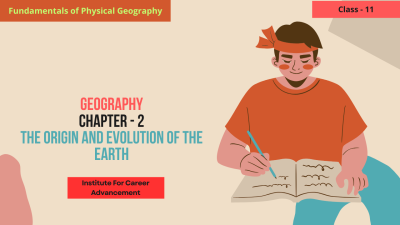The Origin and Evolution of the Earth - Class 11
The Origin and Evolution of the Earth is a Class 11 course that explores the formation and development of our planet. It delves into scientific theories about the Earth's creation, its geological processes, and how it has changed over billions of years. This course provides a comprehensive understanding of the Earth's history and the forces that have shaped its current state. পৃথিবীর উৎপত্তি এবং বিবর্তন একটি একাদশ শ্রেণীর কোর্স যা আমাদের গ্রহের গঠন এবং বিকাশের অন্বেষণ করে। এটি পৃথিবীর সৃষ্টি, এর ভূতাত্ত্বিক প্রক্রিয়া এবং কোটি কোটি বছর ধরে এটি কীভাবে পরিবর্তিত হয়েছে সে সম্পর্কে বৈজ্ঞানিক তত্ত্বগুলি অনুসন্ধান করে। এই কোর্সটি পৃথিবীর ইতিহাস এবং এর বর্তমান অবস্থাকে রূপদানকারী শক্তিগুলির একটি বিস্তৃত ধারণা প্রদান করে।
English
Last updated
Wed, 27-Nov-2024



















